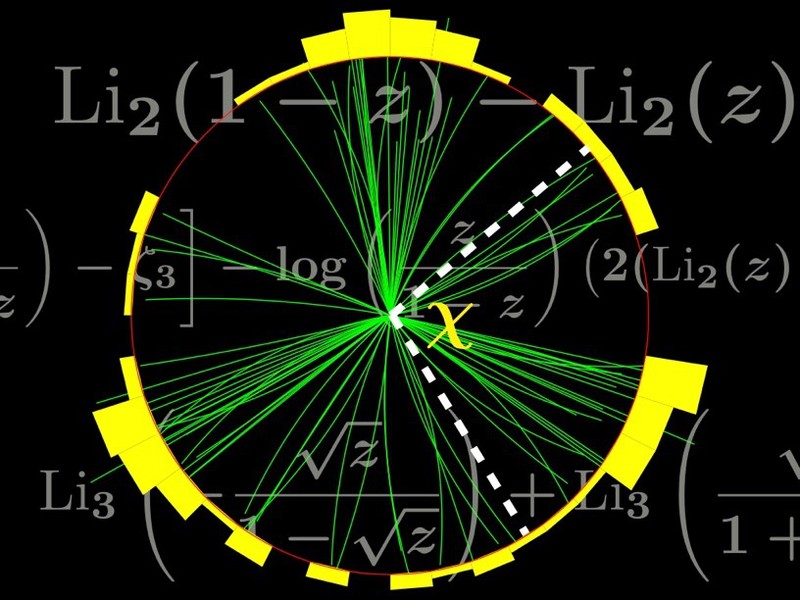Editor: 周婷 Time: 2018-03-11 Number of visits: 230
Recently, Hua Xing Zhu, a tenure track research professor at Zhejiang Institute of Modern Physics, Department of Physics of Zhejiang University, published with collaborators a research paper entitled Analytical computation of energy-energy correlation at next-to-leading order in QCD” in “Physical Review Letters”. This paper was chosen as “Editors’ Suggestion”. It’s collaborators include Professor Lance Dixon from SLAC National Accelerator Laboratory, Stanford University in USA, professor Min-Xing Luo, postdoctoral fellow Vladyslav Shtabovenko and Ph.D. student Tong-Zhi Yang from Zhejiang Institute of Modern Physics, Department of Physics of Zhejiang University.
The correlation function is the most basic observable in quantum field theory. Color confinement strongly constrains the type of correlation function which can be calculated perturbatively in high-energy scattering process involving quantum chromodynamics (QCD), such as the production of jets in electron-positron collider (SLC, LEP) and hadron collider (LHC, Tevatron). Only the linear correlation of energy or charge can be calculated perturbatively. In the theoretical aspect, an important example is energy-energy correlation(EEC). The theoretical calculations and experimental measurements of this observable can help us understand properties of asymptotic freedom of QCD and get precise measurement of strong coupling constant. In addition, EEC is a useful observable in constrained conformal field theory. In a conformal field theory with gravitational duality, measuring EEC is equivalent to using a gravitational shock wave to detect a free-falling string that traverses the AdS horizon.
 Fig. 1 Schematic diagram of energy-energy correction
Fig. 1 Schematic diagram of energy-energy correction
Despite being proposed for 40 years, the first principle calculation of EEC has little progress. In particular, there is only leading order analytical result, which limits the understanding of EEC. The authors of this work get the first analytical result for the EEC at next-to-leading order(NLO), which greatly improve our understanding of EEC. The main challenge of this calculation is that one need to deal with tens of thousands of Feynman phase space integrals, most of which are divergent in ordinary four dimensional space-time. Hua Xing Zhu et al. develop a method to convert the analytical integration problem into solving large system of first order ordinary differential equations, which can be treated in an algebraic way. Although the intermediate procedure of this calculation is extremely complicated, the final result after proper simplification is remarkably simple. In particular, the special functions that appear in final results are only the double logarithmic function Li2 (a function describing the ideal simplex volume in hyperbolic spaces), and its higher weight generalization. This work helps to deepen the understanding of the EEC under the near-collinear limit and back-to-back limit, and suggests hidden simplicity in properly defined QCD observable.
This work was supported by Zhejiang University Fundamental Research Funds for the Central Universities, National Science Foundation of China and U.S. Department of Energy.

Add: No. 8 Hainayuan Building, Zijingang Campus, Zhejiang University, 866 Yuhangtang Rd, Hangzhou, 310027, P.R. China
Tel: +86-571-87953325
Fax: +86-571-87951895
Email: yongyi@zju.edu.cn